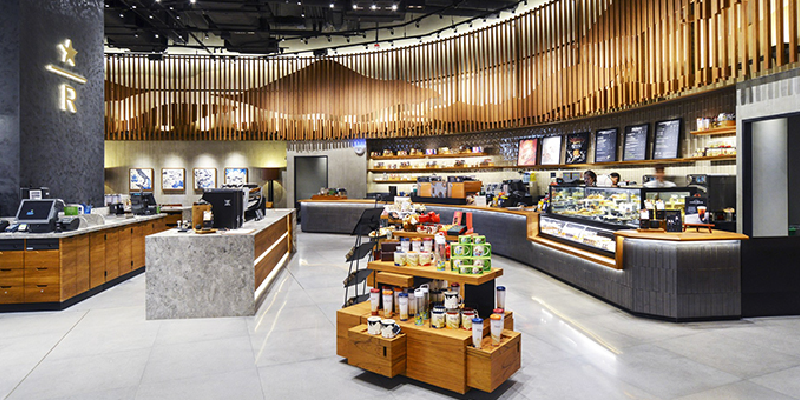
Viv Harries is the Founder of Vivi Creative. He works with businesses to give them the creative edge with unique designs and a solid brand identity.
recent posts
- How a Strong Brand Can Help Welsh Startups Stand Out
- Top 10 Logo Design Mistakes (and How to Avoid Them)
- Web Design Trends of 2025: What’s In, What’s Surprising, and What Actually Works
- Design Trends for 2025
- Maximising Your ROI with Meta and Google Ads in 2025: Best Practices and Our Proven Process

Creating a Memorable Brand Experience
Standing out and leaving a lasting impression on customers is essential for brand success. One of the most powerful ways to achieve this is by crafting a memorable brand experience. When customers connect emotionally with a brand, they become loyal advocates, leading to increased retention, word-of-mouth marketing, and ultimately, higher revenue. In this blog post, VIVI Creative will explore the elements that contribute to a memorable brand experience, along with real-world examples of brands that have mastered the art.
The Power of Authenticity
Authenticity is about being true to the core values, identity, and purpose of the brand. It requires genuine and transparent communication with customers, employees, and stakeholders. When a brand is authentic, it builds trust, credibility, and loyalty among its audience. Here are some key aspects of authenticity in the context of branding:
1. Know Thyself
Authenticity begins with a deep understanding of the brand's essence and its "why." Brands must know what they stand for, what they believe in, and what makes them unique. This self-awareness allows them to communicate their values honestly.
2. Consistency in Actions and Words
Authenticity demands consistency between what a brand says and what it does. Empty promises or contradictory messaging can erode trust quickly. Brands should align their actions with their stated values and promises.
3. Admitting Imperfections
No brand is perfect, and acknowledging mistakes or imperfections can actually strengthen the bond with customers. Admitting faults and taking responsibility demonstrates humility and honesty, making the brand more relatable.
4. Humanizing the Brand
Behind every brand, there are real people with stories, passions, and aspirations. Authenticity can be achieved by humanising the brand through showcasing the people behind it, their stories, and their dedication to the brand's mission.
The Art of Storytelling
Storytelling is an age-old art that transcends cultures and generations. It is how humans have passed down knowledge, emotions, and experiences for millennia. In the context of branding, storytelling is a powerful way to convey a brand's personality, purpose, and values. Here's how storytelling contributes to a memorable brand experience:
1. Emotional Connection
Stories have the ability to evoke emotions in a way that facts and figures alone cannot. A well-crafted brand story can trigger joy, nostalgia, inspiration, or empathy, forging a deeper connection with the audience.
2. Differentiation
In a crowded marketplace, storytelling can set a brand apart from its competitors. By sharing unique and compelling narratives, brands can carve out a distinctive identity that customers can resonate with.
3. Engaging the Audience
Humans are wired to listen to and engage with stories. A captivating brand story captures the audience's attention, keeps them interested, and encourages them to be part of the narrative.
4. Creating a Journey
A brand story is like a journey, with the customer as the protagonist. By weaving the customer's needs and aspirations into the narrative, brands can create a sense of inclusion and relevance.
Examples of Authenticity and Storytelling Done Right
Dove's Campaign for Real Beauty
Dove's campaign challenged traditional beauty standards and celebrated diversity. By using real women with different body shapes and ethnicities, Dove authentically portrayed the beauty that exists in every individual.

Ben & Jerry's
This ice cream brand has never shied away from speaking out on social issues like climate change, racial justice, and marriage equality. Their commitment to social responsibility is deeply embedded in their brand story, attracting like-minded consumers.

Airbnb
Airbnb's "Belong Anywhere" campaign exemplifies storytelling at its finest. Through heartwarming ads showcasing diverse travelers connecting with local communities, Airbnb conveys the idea of belonging, adventure, and genuine experiences.
Authenticity and storytelling form the foundation of a memorable brand experience. When brands embrace their true selves, communicate transparently, and craft narratives that resonate with their audience, they can create emotional connections that go beyond mere transactions. By infusing their brand with authenticity and compelling stories, businesses can build trust, loyalty, and an army of passionate advocates who will stay with them for the long haul.
Consistency Across Channels
All consumers interact with brands across various platforms and touchpoints, maintaining consistency is critical for building a strong and recognizable brand identity. Consistency across channels ensures that customers have a cohesive and seamless experience, regardless of where and how they engage with the brand. Let's explore the importance of consistency and how it contributes to creating a memorable brand experience:
Establishing Brand Recognition
Consistency in branding elements such as logo, colour palette, typography, and messaging helps in establishing immediate brand recognition. When customers see a familiar logo or colour scheme, they can quickly associate it with your brand, reinforcing its identity in their minds.
Building Trust and Credibility
A consistent brand image instills confidence in customers. When they encounter a consistent brand experience across different channels like social media, website, emails, and offline marketing materials, it communicates professionalism and reliability, leading to increased trust and credibility.
Reinforcing Brand Values and Personality
Consistency enables brands to reinforce their values and personality traits. Whether it's being innovative, eco-friendly, or customer-centric, consistently portraying these attributes across channels helps customers understand what the brand stands for and what they can expect from it.
Enhancing User Experience
Inconsistency can lead to confusion and frustration among customers. A consistent user experience, from website navigation to customer service interactions, streamlines the customer journey, making it easier for them to engage with the brand.
Amplifying Brand Recall
Consistency aids in enhancing brand recall. When customers encounter consistent branding repeatedly, it strengthens the memory associations, making it more likely for them to recall and choose the brand when making a purchasing decision.
Building Emotional Connections
Consistency creates a sense of familiarity and comfort. By consistently delivering on brand promises and expectations, brands can foster emotional connections with their audience, leading to greater loyalty and advocacy.
Maintaining Brand Equity
Brand equity refers to the intangible value a brand holds in the minds of consumers. Consistency in brand presentation and experiences helps preserve and grow this equity over time, allowing the brand to retain its value and relevance.
Adapting to Different Channels
Consistency doesn't mean replicating the same content or message across all channels. Instead, it involves adapting the brand's essence and values to suit the unique characteristics of each platform while maintaining a cohesive overall message.

McDonald's
Whether it's their iconic golden arches, color scheme, or tagline "I'm lovin' it," McDonald's maintains a consistent brand identity globally, ensuring customers recognize and connect with the brand wherever they are.
Google's simple and recognizable logo is consistently used across its various products and services, providing a unified experience to users. The brand's minimalist design approach remains consistent throughout its interfaces.
Starbucks
Starbucks maintains consistency in its store design, menu, and product packaging worldwide. Customers know they can expect the same quality and experience, whether they visit a Starbucks in New York City or Tokyo.
Consistency across channels is a crucial aspect of creating a memorable brand experience. By establishing brand recognition, building trust, reinforcing values, enhancing user experience, and amplifying brand recall, brands can solidify their position in the hearts and minds of customers. Embracing consistency as a cornerstone of branding enables businesses to communicate a cohesive and powerful message that resonates with their target audience, ultimately leading to brand loyalty and sustained success.
User-Generated Content
Authenticity and Trust
UGC is inherently authentic because it comes directly from real customers who have experienced a brand's products or services. Unlike traditional advertising, UGC is perceived as genuine and unbiased, which fosters trust among potential customers. When people see others like them enjoying a product or having a positive experience, it influences their perception and increases the likelihood of conversion.
Building a Community
By encouraging UGC, brands can create a sense of community among their customers. When customers share their experiences and stories related to the brand, they become part of a larger narrative. This sense of belonging strengthens the emotional connection between customers and the brand.
Engaging and Interactive
UGC turns customers into active participants rather than passive observers. When people contribute content, they become more engaged with the brand. Brands can run UGC campaigns, contests, or challenges to inspire creativity and encourage customers to share their experiences, thus boosting brand interaction.
Diverse Perspectives
UGC provides a diverse range of perspectives and experiences with the brand. Customers have unique ways of showcasing products or using services, which adds depth and richness to the brand's image. This diversity can attract a broader audience and cater to different segments effectively.
Amplifying Reach and Visibility
When customers share UGC on their social media platforms, it extends the brand's reach to their friends, family, and followers. This organic sharing can result in a snowball effect, increasing the brand's visibility and exposure to new potential customers.
Leveraging Influencer Marketing
Influencers often play a crucial role in generating UGC. Brands can collaborate with influencers who resonate with their target audience to promote their products or services through authentic UGC. This approach blends influencer marketing with genuine user experiences, resulting in a powerful brand narrative.
Insights and Feedback
Monitoring UGC can provide valuable insights into customer sentiment and preferences. Brands can learn from customer feedback, identify pain points, and make improvements to enhance their offerings and customer experience.
GoPro
GoPro's success largely stems from the UGC content created by its customers. The brand encourages users to share their thrilling and adventurous moments captured with their cameras. The #GoPro and #GoProHero hashtags have become synonymous with epic action shots, turning customers into brand ambassadors.
Starbucks
Starbucks' #WhiteCupContest: Starbucks launched a UGC contest inviting customers to doodle on their iconic white cups and share the images on social media. The campaign generated thousands of creative entries, fostering a sense of creativity and community around the brand.
National Geographic
National Geographic's Photo Contests: National Geographic consistently runs UGC photo contests, encouraging photographers worldwide to share their best shots. The powerful imagery not only showcases the brand's commitment to photography but also engages its audience on a profound level.
User-Generated Content has become an indispensable tool for creating memorable brand experiences. By leveraging the authenticity, trust, engagement, and reach that UGC provides, brands can harness the power of their customers to tell compelling stories and build a thriving community around their products and services. By embracing UGC, businesses can deepen their connection with their audience, strengthen brand loyalty, and stand out in today's crowded digital landscape.
In conclusion, crafting a memorable brand experience is a multi-faceted endeavor that requires a strategic blend of authenticity, consistency, storytelling, and user engagement. By focusing on these key factors, brands can leave a lasting impression on their potential customers, leading to increased loyalty, advocacy, and business success.
Authenticity and storytelling empower brands to connect emotionally with their audience, sharing their values, mission, and journey in a genuine and transparent manner. This creates a sense of trust and credibility, fostering stronger relationships with customers.
Consistency across channels is essential for establishing a strong brand identity and recognition. When customers encounter a cohesive and seamless experience across various touchpoints, it enhances brand recall, builds trust, and reinforces brand values and personality.
User-Generated Content (UGC) leverages the creativity and advocacy of customers to create authentic and engaging brand experiences. UGC fosters a sense of community, amplifies brand reach, and provides valuable insights, making it a powerful tool for building emotional connections with customers.
Moreover, exceptional customer service, personalized experiences, surprise and delight, social responsibility, innovation, and interactive initiatives contribute to a brand's memorability.
Looking at real-world examples, we see brands like National Geographic, Go Pro, and Airbnb leading the way in crafting unforgettable brand experiences. These companies have successfully embraced authenticity, consistency, storytelling, and UGC to forge deep connections with their audience, standing out as beacons of success in their respective industries.
As businesses continue to navigate the competitive landscape, investing in a memorable brand experience is not only a strategic decision but a transformative one. By creating a brand that resonates with the hearts and minds of customers, companies can cultivate a loyal and enthusiastic customer base, driving sustained growth and prosperity well into the future. Remember, in the pursuit of memorability, the power lies in creating experiences that captivate, connect, and leave a lasting mark on the hearts of customers.
Thanks for reading.








